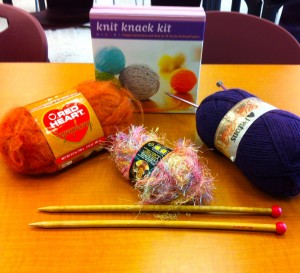
By DeShawn Mcleod
Staff Writer
Since SLA opened its doors to students, many clubs have come and gone throughout the years.
Science and History teacher Gamal Sherif hosted Yoga club, which lasted for one year.
“During the times Yoga was available, we would sit down and talk about what the physical postures we would be working on and the relationship between the mind and the body for a few brief moments,” he said. “Then we’d do some warm up poses and then focus on one particular activity.”
Yoga club started in the school year of 2007-2008 and student interest was “very high, we had 20 the first time,” Mr. Sherif said.
But, in the same year, student interest began to take a downward turn.
“Then it was 10 for a couple of weeks, and then five, and then two,” Mr. Sherif continued.
The club discontinued for a couple of reasons. One was student interest. Mr. Sherif thought that, “some of the clubs like yoga are not as main stream as other clubs.”
“A second one is that specially with yoga, we did it once a week, and I think students were looking for not the actual activity, but students were looking for a sense of belonging or community.”
As for Improv club, it was supervised by Former English Teacher Zac Chase, who is now a graduate student in Education at Harvard University
According to Mr. Chase, Improv club “was more of a space where people met weekly and practiced learning improvisational theatre.”
“Each week, we’d meet for anywhere from an hour and a half to two hours. We’d practice some warm-up exercises to stretch our bodies and minds to loose them from the rigors of the school day. Then, we’d play any number of improv games and practice scene work.”
The reason Improv club is no longer available because Mr. Chase ran the club, and as stated before he was no longer apart of the staff.
“The key is finding a sponsor who has a background in improv and feels comfortable leading it,” said Mr. Chase.
The Knitting club was facilitated by English teacher Alexa Dunn.
“It was Tuesday afternoons, we’d have music, I’d play something on my computer and we would sit around and knit and talk,” Ms. Dunn said. “It was fun.”
Towards the end of the 2010-2011 school year, Ms. Dunn decided to have the club come to a close.
“I was having trouble getting donations and I couldn’t sustain the club with just myself.” Dunn stated.
However, Knitting club might have a possibility of coming back.
“I’ve been asked to bring it back, there are kids who want it again. But for me to make it worth it, I would have to have regular attendance and more of a commitment. I don’t want to be sitting in my empty room on a Tuesday afternoon waiting for people to come in,” Ms. Dunn stated.
Since major budget cuts, it’s harder to support newer clubs because teachers aren’t able to host them. Ms. Dunn commented, “There’s no extra curricular money anymore, so teachers don’t get paid.”
Mr. Sherif had a different perspective.
“Everybody is really busy, if you stress a community and the community has to do more with less, like fewer teachers, there’s less leftover energy for other clubs and activities.”
They have a mutual under lying point: no school money + no teacher = no activities for students.
If the school community wants more clubs, it’s up to them to start a coalition and form a commitment. Students need to step up to the plate and act on what interests them.
“The club scene was built by students,” Ms. Dunn said, “not necessarily by faculty.”
Leave a Reply